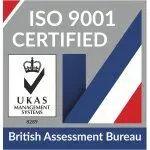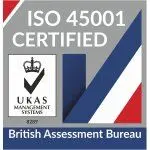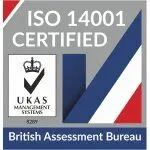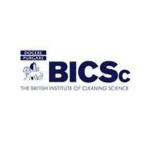
The Importance of a Clean School Environment
Overview
Introduction to the importance of a clean school environment
A clean school environment is essential for the overall well-being and development of students. It not only promotes good health and hygiene but also creates a conducive learning atmosphere. A clean school environment helps in reducing the spread of germs and diseases, which can negatively impact student attendance and academic performance. Additionally, a clean school environment instills a sense of pride and responsibility in students, teaching them the importance of cleanliness and taking care of their surroundings. By maintaining a clean school environment, we can ensure the safety and well-being of students and create a positive learning environment.
Benefits of maintaining a clean school environment
A clean school environment offers numerous benefits to students, teachers, and staff. Firstly, it helps prevent the spread of germs and reduces the risk of illnesses, leading to improved attendance and overall health. A clean school also promotes a positive learning environment by reducing distractions and creating a sense of order and discipline. Additionally, a clean school environment enhances the physical safety of students, as hazards and obstacles are minimized. It also instills a sense of pride and responsibility among students, teaching them the importance of cleanliness and hygiene. Overall, maintaining a clean school environment is essential for the well-being and success of everyone in the school community.
Impact of a clean school environment on student health and performance
A clean school environment plays a crucial role in promoting the health and performance of students. When the school is free from dirt, dust, and germs, it reduces the risk of infections and illnesses among students. This, in turn, leads to fewer absences and better overall attendance. Additionally, a clean school environment creates a conducive atmosphere for learning by reducing distractions and improving concentration. Students are more likely to be engaged and focused in a clean and organized classroom. Therefore, maintaining a clean school environment is essential for ensuring the well-being and academic success of students.
Creating a Clean School Environment
Implementing regular cleaning schedules
Regular cleaning schedules are essential in maintaining a clean school environment. By implementing a set schedule for cleaning, schools can ensure that all areas, including classrooms, hallways, and common areas, are regularly cleaned and sanitized. This helps to prevent the spread of germs and bacteria, creating a healthier and safer environment for students and staff. Additionally, regular cleaning schedules promote a sense of cleanliness and orderliness, which can positively impact the overall learning experience. By prioritizing regular cleaning, schools demonstrate their commitment to providing a clean and hygienic environment for everyone.
Proper waste management
Proper waste management is essential for maintaining a clean school environment. By implementing effective waste disposal systems and recycling programs, schools can minimize the accumulation of waste and promote a healthier learning environment. Students can be educated about the importance of reducing, reusing, and recycling waste, which not only helps in waste management but also instills a sense of responsibility towards the environment. Additionally, proper waste management practices contribute to the overall cleanliness and hygiene of the school, reducing the risk of pest infestations and the spread of diseases. It is crucial for schools to prioritize proper waste management to create a safe and conducive learning environment for students.
Promoting cleanliness through education and awareness
A clean school environment plays a crucial role in promoting the health and well-being of students. By educating and raising awareness about the importance of cleanliness, schools can instill good hygiene habits in students from a young age. Teaching students about the benefits of a clean environment, such as reducing the spread of germs and preventing illnesses, can help create a culture of cleanliness within the school community. Additionally, organizing awareness campaigns and engaging students in activities that promote cleanliness can further reinforce the message and encourage active participation. Through education and awareness, schools can empower students to take responsibility for maintaining a clean school environment, ensuring a safe and healthy learning environment for all.
Ensuring Hygiene in School Facilities
Maintaining clean restrooms
Maintaining clean restrooms is essential for creating a healthy and hygienic school environment. Clean restrooms not only promote good health and prevent the spread of germs, but they also contribute to the overall well-being and comfort of students and staff. Regular cleaning and disinfection of restrooms, including toilets, sinks, and floors, should be a top priority for schools. Additionally, ensuring an adequate supply of soap, paper towels, and toilet paper is crucial to maintaining cleanliness. By prioritizing the cleanliness of restrooms, schools can provide a safe and pleasant environment for everyone.
Proper sanitation practices in the cafeteria
Maintaining proper sanitation practices in the cafeteria is crucial for ensuring the health and well-being of students and staff. A clean cafeteria environment helps prevent the spread of germs and reduces the risk of foodborne illnesses. It is important to regularly clean and sanitize all surfaces, including tables, countertops, and food preparation areas. Additionally, proper waste disposal and regular cleaning of kitchen equipment are essential to maintain a hygienic cafeteria. By implementing and enforcing strict sanitation practices, schools can create a safe and healthy environment for everyone.
Regular disinfection of classrooms and common areas
Regular disinfection of classrooms and common areas is essential for maintaining a clean school environment. By disinfecting these spaces on a regular basis, schools can reduce the spread of germs and prevent the transmission of illnesses. This is particularly important in crowded areas such as classrooms and common areas where students and staff come into close contact. Regular disinfection not only helps to keep students and staff healthy, but it also creates a safer and more hygienic learning environment. Schools should implement a comprehensive disinfection plan that includes the use of effective disinfectants and proper cleaning techniques to ensure the cleanliness of classrooms and common areas.
Preventing the Spread of Illnesses
Importance of hand hygiene
Maintaining proper hand hygiene is crucial in a school environment. It plays a significant role in preventing the spread of germs and illnesses among students and staff. By washing hands regularly with soap and water, or using hand sanitizers when soap is not available, students can reduce the risk of contracting and transmitting diseases. Hand hygiene also teaches children important lifelong habits that can protect their health and well-being. Therefore, emphasizing the importance of hand hygiene in schools is essential for creating a clean and healthy environment for everyone.
Implementing illness prevention protocols
In order to maintain a clean school environment, it is crucial to implement effective illness prevention protocols. These protocols should include regular cleaning and disinfection of classrooms, common areas, and high-touch surfaces. Additionally, it is important to promote proper hand hygiene among students and staff by providing hand sanitizers and handwashing stations throughout the school. By implementing these protocols, schools can reduce the spread of illnesses and create a healthier learning environment for everyone.
Proper cleaning and disinfection of high-touch surfaces
Maintaining a clean school environment is of utmost importance, especially when it comes to proper cleaning and disinfection of high-touch surfaces. These surfaces, such as doorknobs, light switches, and desks, are frequently touched by students and staff throughout the day, making them potential hotspots for the spread of germs and bacteria. By regularly cleaning and disinfecting these high-touch surfaces, schools can help prevent the transmission of illnesses and create a healthier and safer learning environment for everyone.
Collaboration with Students, Staff, and Parents
Involving students in maintaining cleanliness
One effective way to maintain a clean school environment is by involving the students. When students are actively engaged in the process of cleanliness, they develop a sense of ownership and responsibility towards their school. This can be done by assigning specific cleaning tasks to different student groups or by organizing regular cleaning campaigns where students participate in cleaning classrooms, common areas, and outdoor spaces. By involving students in maintaining cleanliness, we not only ensure a cleaner school but also instill important values of cleanliness and hygiene in them.
Training staff on cleaning best practices
Training staff on cleaning best practices is essential for maintaining a clean school environment. By providing proper training, staff members can learn the most effective and efficient ways to clean and sanitize classrooms, restrooms, and common areas. This includes teaching them the correct use of cleaning products, equipment, and techniques to ensure that all surfaces are thoroughly cleaned and disinfected. Additionally, training can also educate staff on the importance of hygiene practices, such as handwashing and proper waste disposal, to prevent the spread of germs and maintain a healthy school environment. Overall, investing in staff training on cleaning best practices is a crucial step in creating a clean and safe learning environment for students and staff alike.
Engaging parents in promoting a clean school environment
Parents play a crucial role in promoting a clean school environment. By actively engaging parents in this endeavor, schools can create a sense of ownership and responsibility among the entire school community. Encouraging parents to support and participate in cleanliness campaigns, such as organizing clean-up drives or promoting proper waste disposal practices, can instill important values in students and create a culture of cleanliness. Additionally, involving parents in decision-making processes related to school cleanliness can ensure that their perspectives and concerns are taken into account, leading to more effective and sustainable solutions. By working together with parents, schools can foster a clean and healthy environment that benefits everyone.
Conclusion
Summary of the importance of a clean school environment
A clean school environment is essential for the overall well-being and development of students. It not only promotes good health and hygiene but also creates a conducive atmosphere for learning. A clean school environment helps in reducing the spread of diseases and illnesses, ensuring the safety of students and staff. Additionally, it enhances the aesthetic appeal of the school, making it a pleasant and inviting place for students to study and grow. Therefore, maintaining a clean school environment should be a top priority for educational institutions.
Call to action for maintaining cleanliness in schools
Maintaining a clean school environment is crucial for the health and well-being of students. It not only reduces the spread of germs and prevents illnesses but also creates a positive learning atmosphere. To ensure cleanliness in schools, it is important for all stakeholders, including teachers, students, parents, and school administrators, to actively participate. Teachers can educate students about the importance of cleanliness and incorporate it into their curriculum. Students can take responsibility for keeping their classrooms and common areas clean. Parents can support cleanliness initiatives by reinforcing good hygiene habits at home. School administrators can provide the necessary resources and infrastructure to maintain cleanliness. Together, we can create a safe and healthy environment for our students, promoting their overall well-being and academic success.
Impact of a clean school environment on overall well-being
A clean school environment plays a crucial role in promoting the overall well-being of students. When the school premises are clean and well-maintained, it creates a positive and hygienic atmosphere that enhances learning and productivity. A clean environment reduces the risk of spreading diseases and illnesses, ensuring the health and safety of students. Additionally, a clean school environment instills a sense of pride and responsibility in students, teaching them the importance of cleanliness and hygiene in their daily lives. Overall, a clean school environment contributes to the physical, mental, and emotional well-being of students, enabling them to thrive academically and personally.






